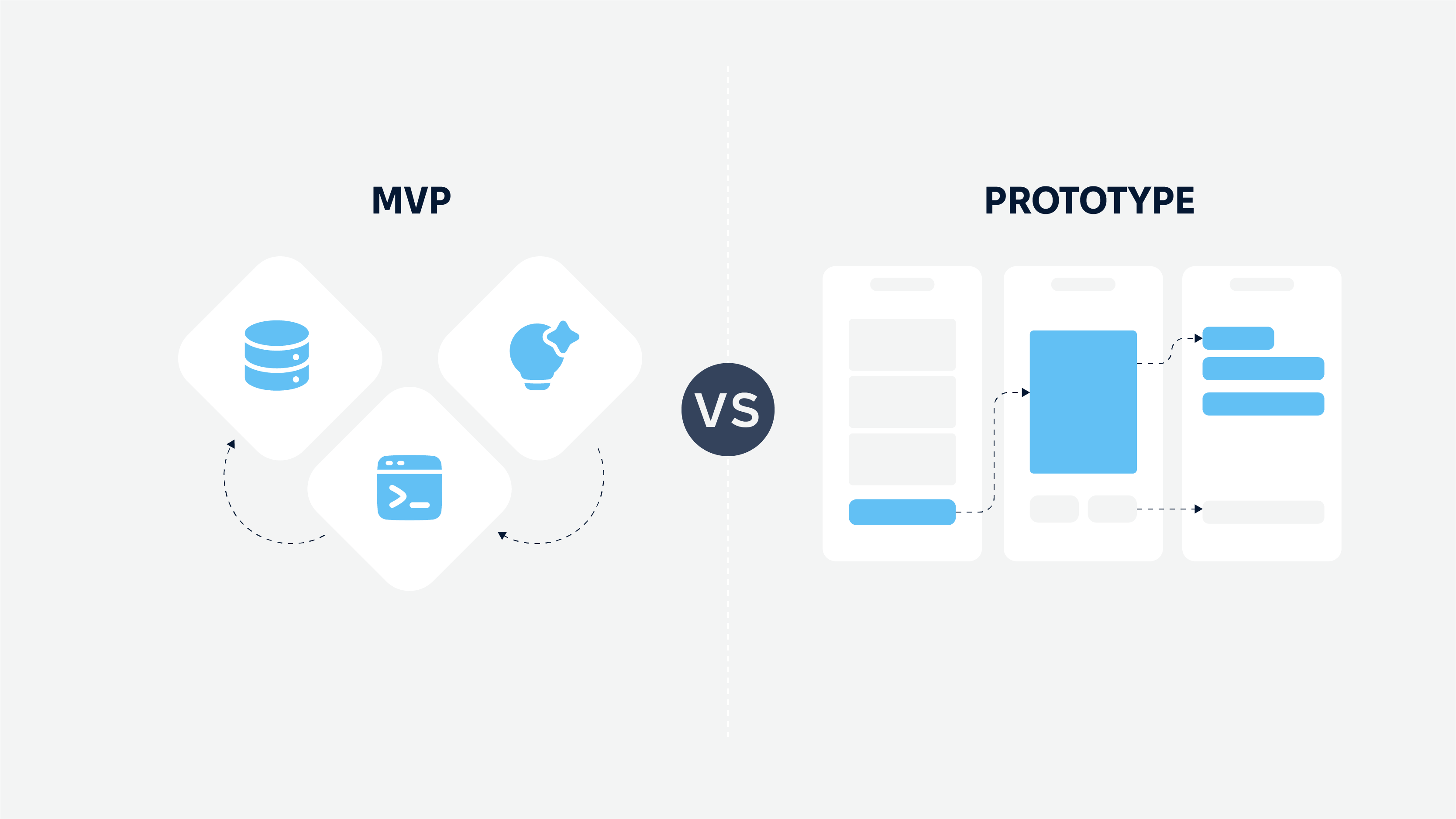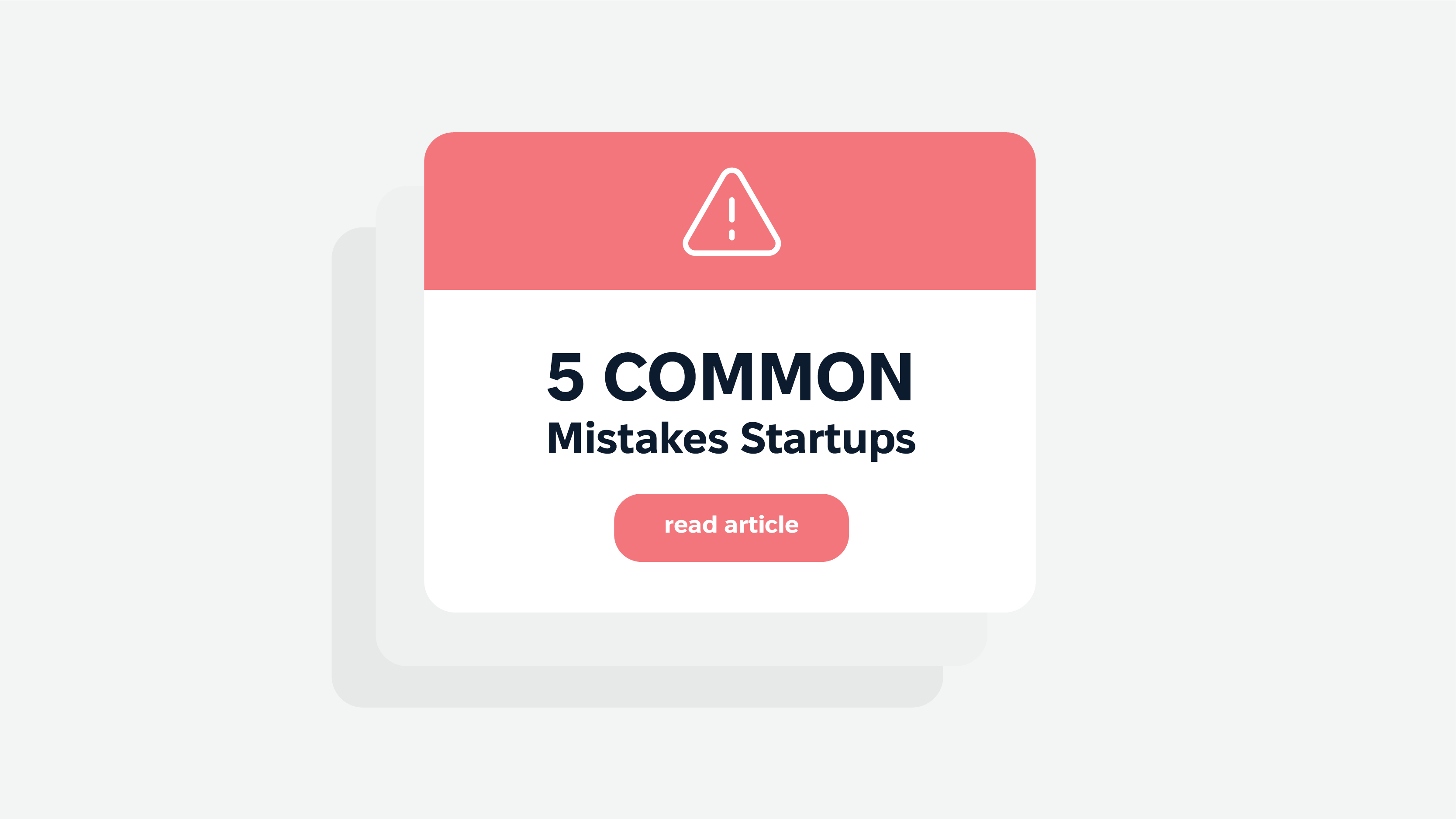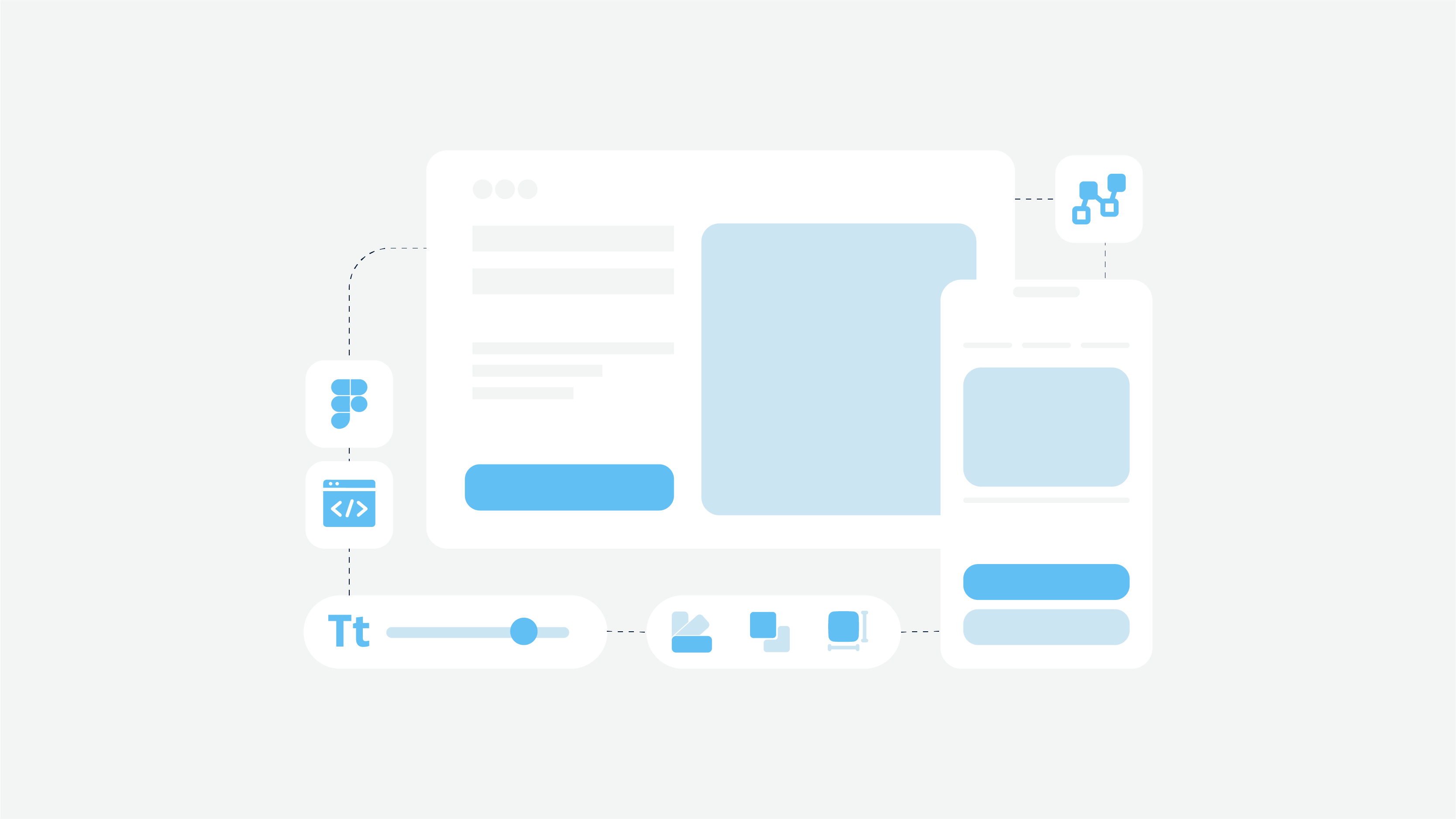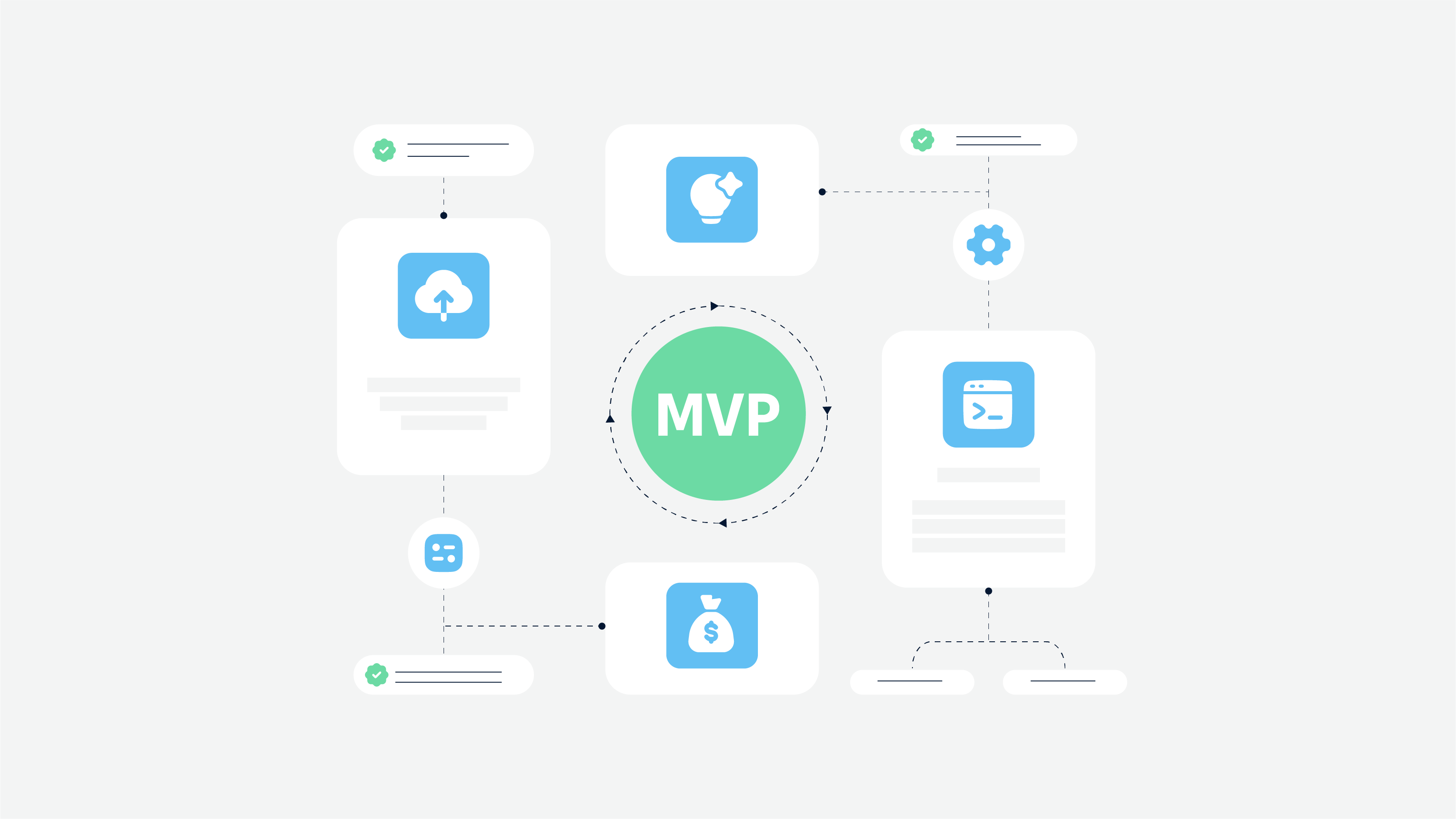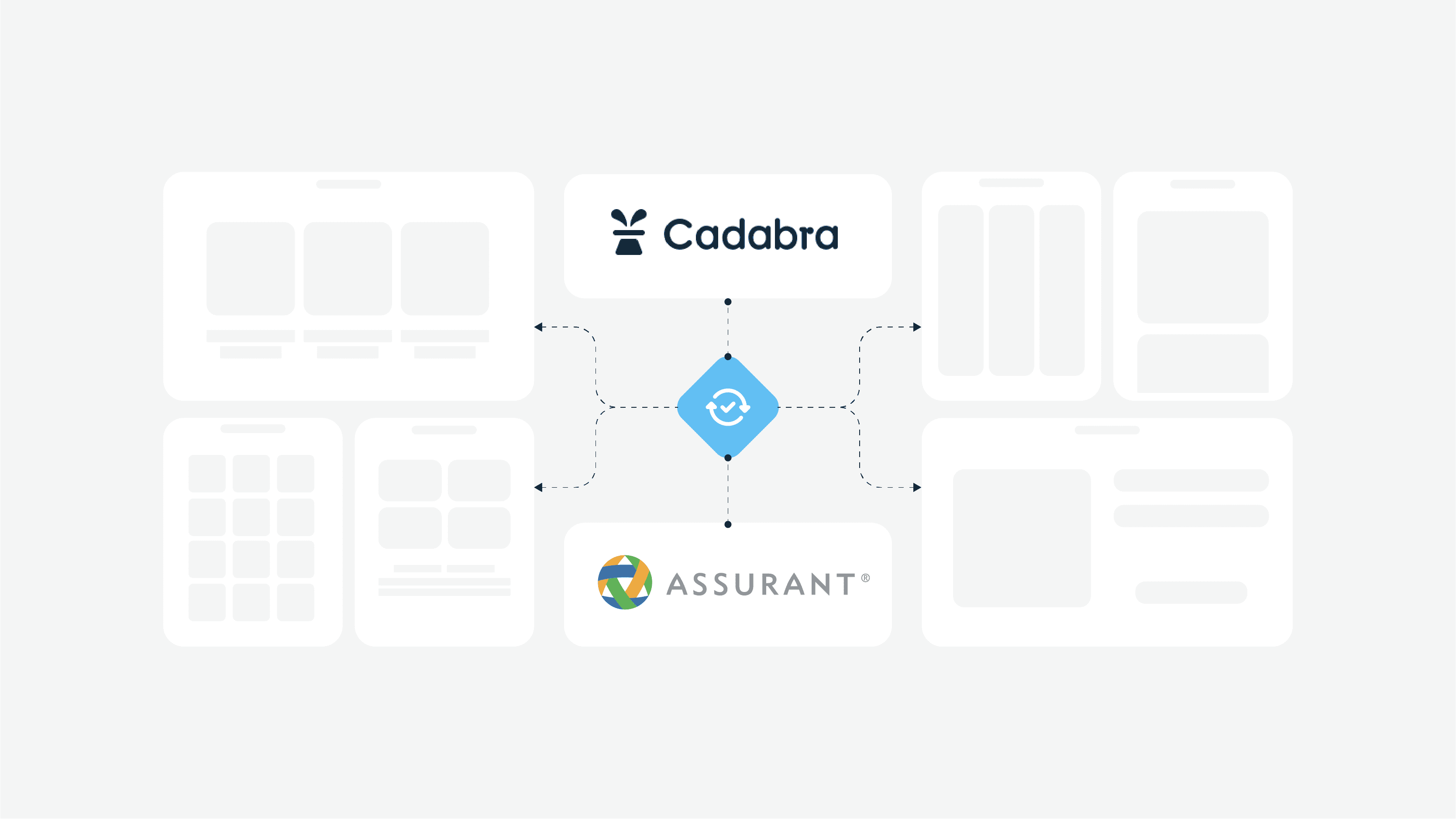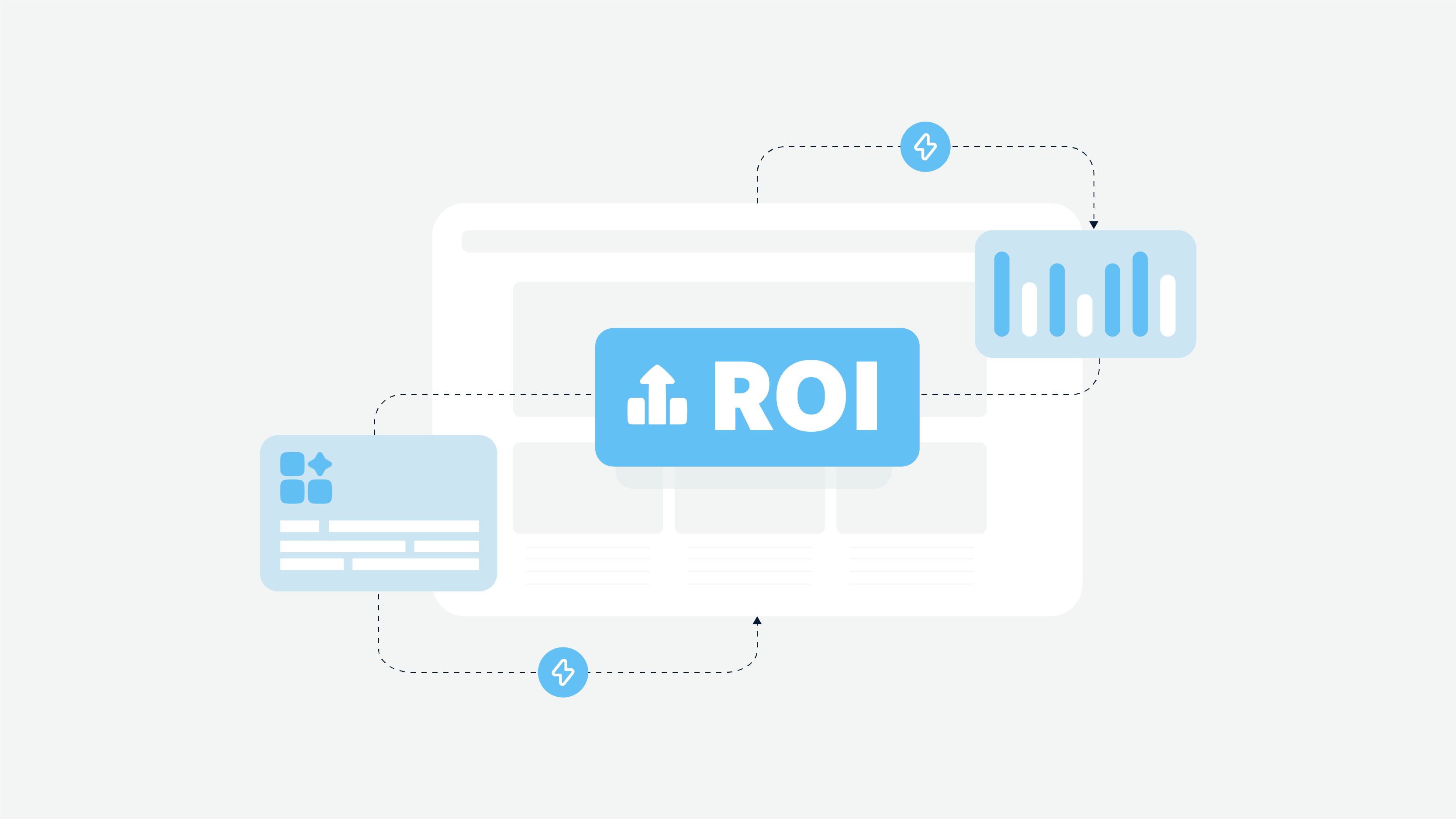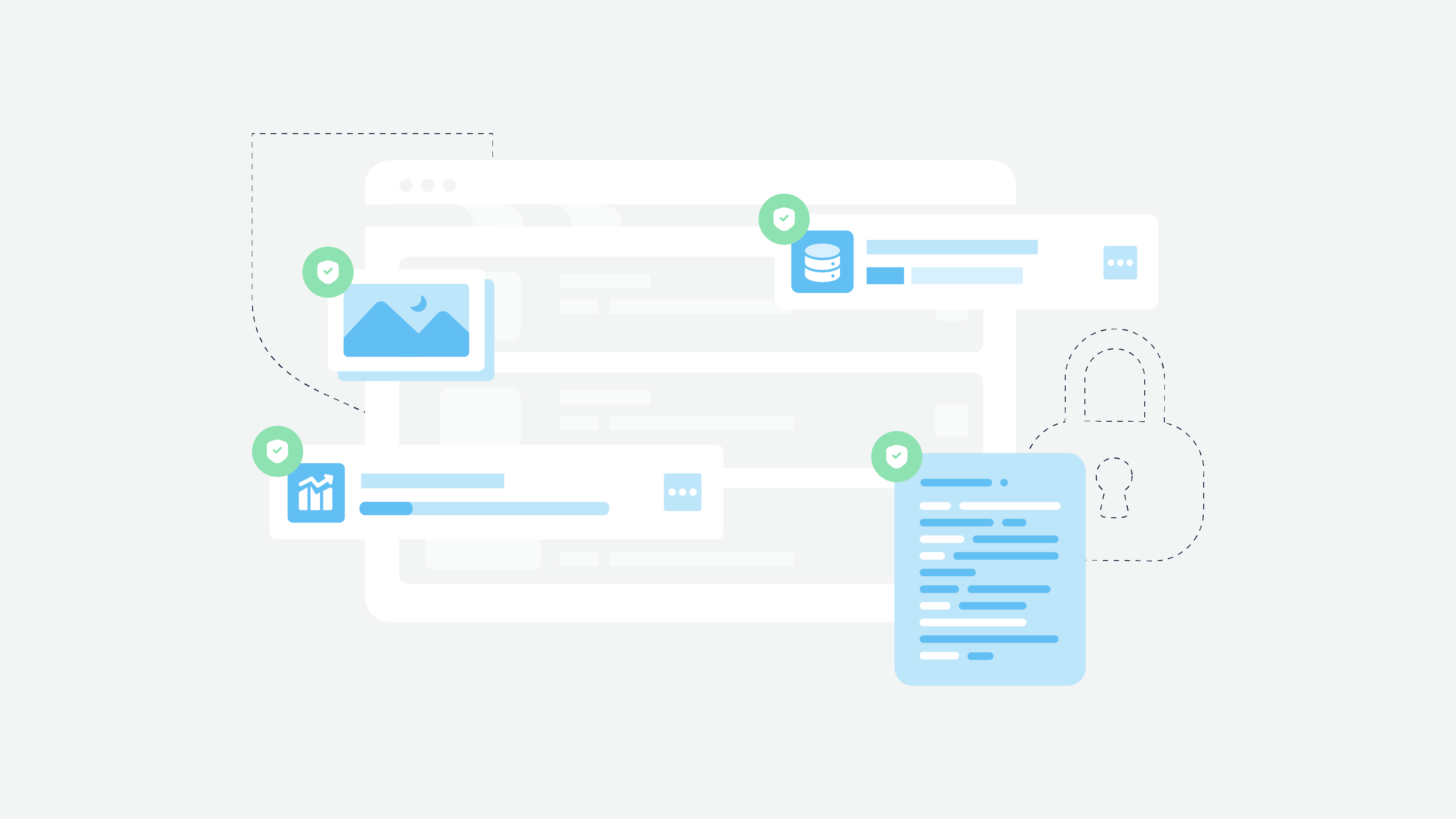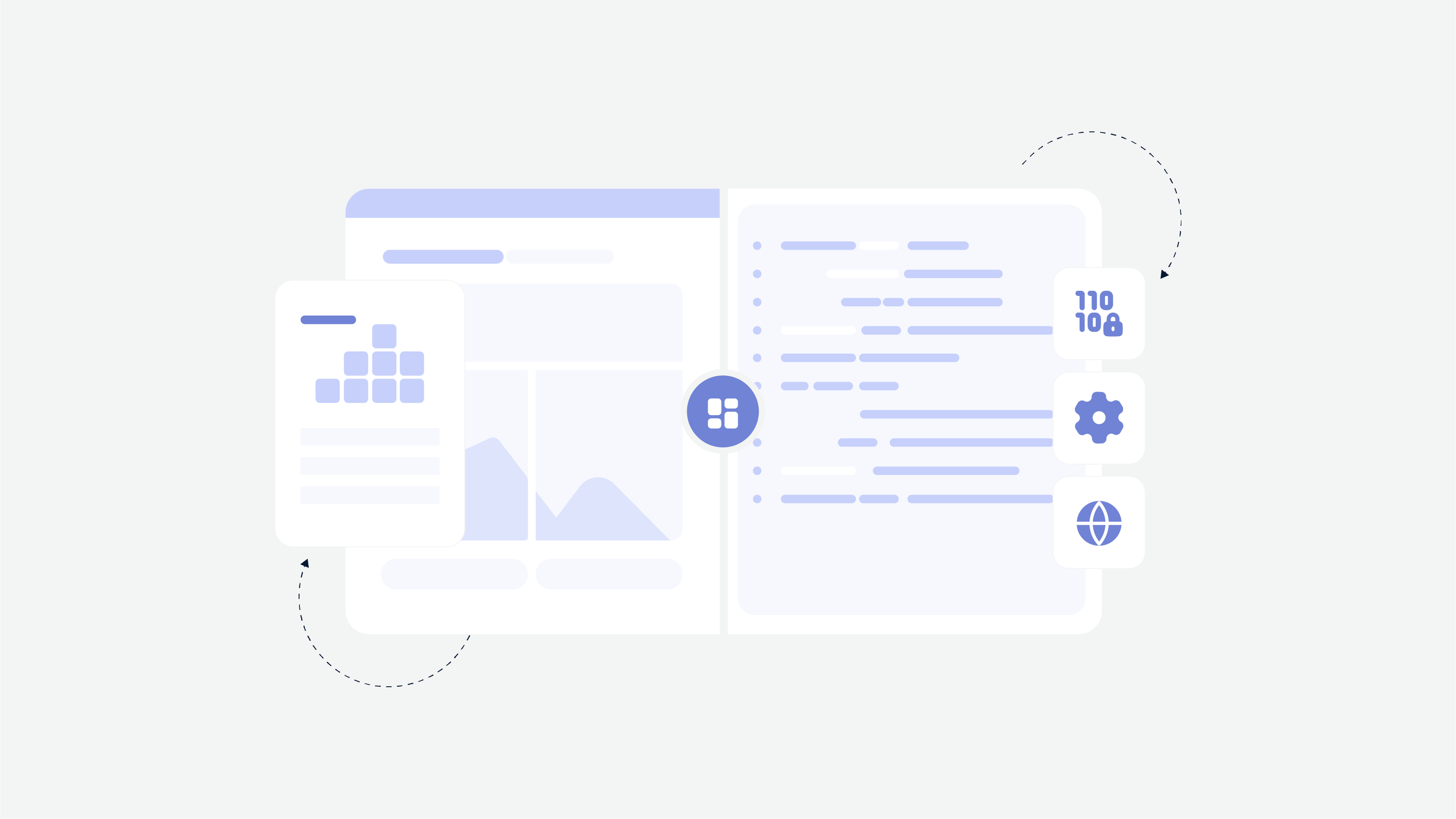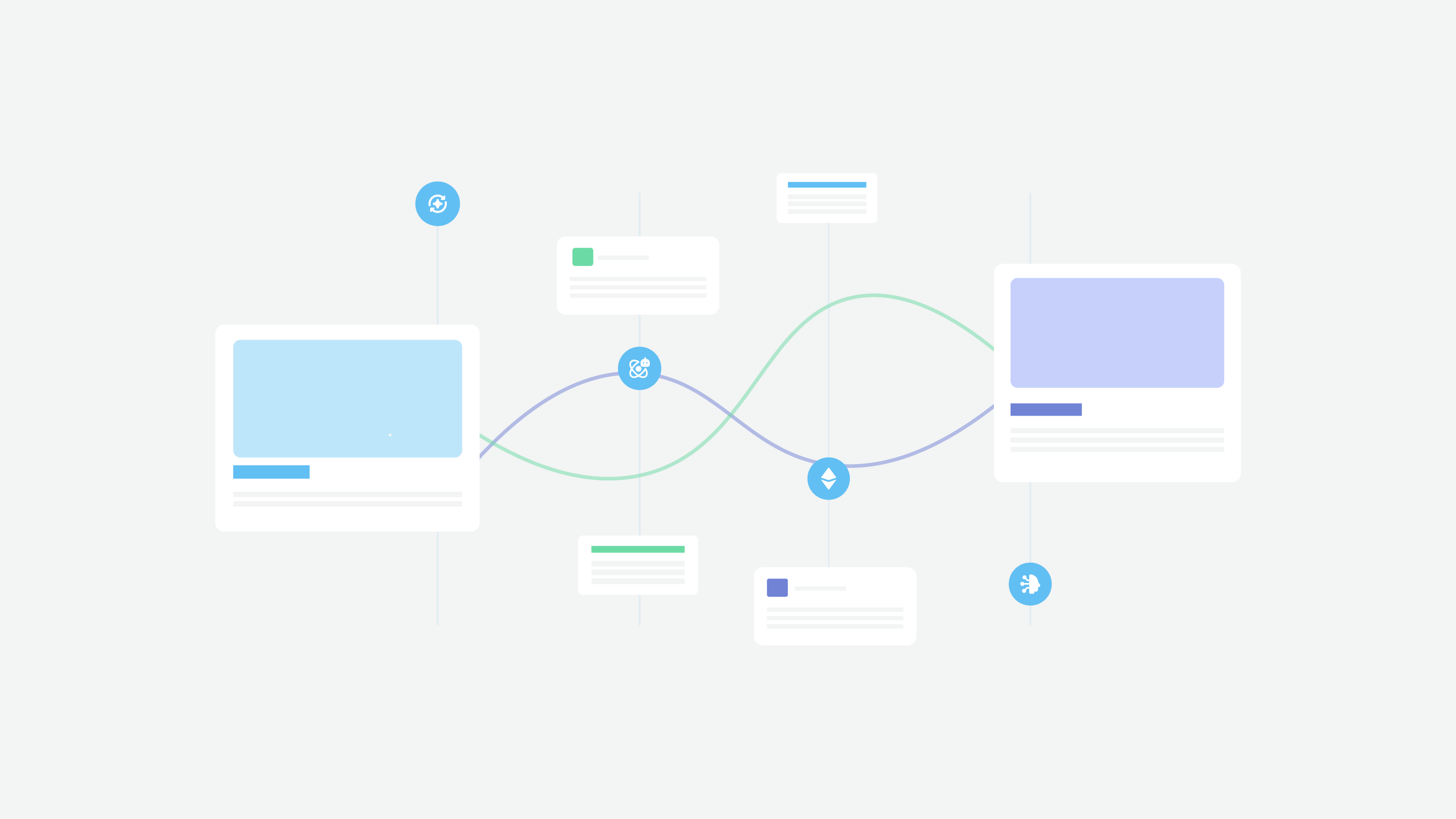According to Statista, the global eCommerce market had $3,5 billion of sales by the end of 2019, and it is 14% of the total share of global retail sales. So these figures speak for themselves. Today many eCommerce websites strive to beat the competition and be at the same level as a giant marketplace like Amazon.
What should you do if you are a newbie in the eCommerce world, but you plan to build a website like Amazon and take part in the race? Well, your limits are only in your mind, so you should always attempt to be the best. The first thing you should start with is to learn how to make a website like Amazon. Our detailed guide will help you keep up with the right build strategy, follow appropriate development steps, and start your race.
What eCommerce Is About
eCommerce is a collective conception that includes trade and financial operations that are performed via the Internet. So it is the online business, sale and purchase, and it is considered to be the whole industry of the international economy.
eCommerce became an integral part of a modern economy in the contemporary world. The number of online eCommerce stores grows exponentially, providing users with different types of products and services. But eCommerce means not online stores only. Booking hotels online, tickets purchase, Internet banking are also eCommerce services.
A Little Bit of History of eCommerce
The concept of eCommerce dates back to the 1960s when businesses began using Electronic Data Interchange (EDI). It was the way to share business documents with other companies.
The development of the World Wide Web in the 1990s revolutionized eCommerce web development. It became accessible to a wider audience. Companies like Amazon were pioneers in this space, transforming the way people shop and sell goods.
Types Of eCommerce
eCommerce can be divided into three types:
B2B (business-to-business)
When one company sells something to another company. For example, the IT company buys laptops from the company that is engaged in hardware sales;
This type of eCommerce is characterized by high-volume transactions, long-term contracts, complex supply chains, and the need for complex web development. B2B transactions often involve customized solutions tailored to the buyer’s specific needs. Here, your web developer must do anything to enhance operational efficiency and productivity.
Additionally, B2B eCommerce platforms often integrate with enterprise resource planning (ERP) systems. This part of eCommerce web development is critical for seamless order management, inventory tracking, and financial reporting.
This integration facilitates better decision-making and strategic planning. The B2B model also emphasizes building strong relationships between buyers and suppliers, focusing on reliability, quality, and after-sales support to maintain long-term partnerships.
B2C (business-to-consumer)
When a company sells products or services to a specific consumer. It can be both physical products and online courses. Amazon is a good example of a B2C type. That is, B2B is used by companies to buy something that will help them improve their business, whereas B2C is a purchase of something for personal use.
B2C eCommerce in its most common form, involves transactions between businesses and individual consumers. B2C transactions are typically characterized by shorter sales cycles and higher transaction volumes compared to B2B. So, you must consider it before the start of the web development process.
In the B2C space, companies focus on enhancing the customer experience through personalized marketing, user-friendly interfaces, and efficient customer service. The goal is to create a seamless shopping experience that encourages repeat purchases and customer loyalty.
Advanced technologies like artificial intelligence and machine learning are often employed to analyze consumer behavior. This enable businesses to offer personalized recommendations and targeted promotions.
C2C (consumer-to-consumer)
When an individual sells a product to another individual. This type is widespread on various marketplaces like eBay, AliExpress, OLX, etc.
C2C eCommerce involves transactions between individual consumers, facilitated by third-party platforms. This model is prevalent on online marketplaces, where individuals can buy and sell products directly to each other. It is essential to understand this during web development.
C2C transactions typically involve lower volumes and values compared to B2B and B2C. However, they are significant in promoting the circular economy by enabling the resale and reuse of goods. Such platform can be a part of sustainable web development.
C2C platforms help users monetize their personal belongings and for buyers to find unique or second-hand items at potentially lower prices. C2C eCommerce relies heavily on user-generated content, such as product listings, reviews, and ratings, to build trust and facilitate transactions.
The success of C2C platforms depends on their ability to maintain secure payment systems, effective dispute resolution mechanisms, and robust community guidelines to ensure a safe and reliable marketplace for users. So, your web developers must choose programming languages, frameworks, and even usage of hypertext markup language during the creation of C2C web applications.
Benefits of eCommerce mobile or web applications
Let’s take a look at the many benefits that the eCommerce industry offers.
- Convenience and 24/7 access. Thanks to the capabilities of mobile and web development, namely AI and advanced programming languages, consumers can shop 24/7 from anywhere with an Internet connection. Modern solutions often have virtual assistants who answer user questions at any time of the day.
- Wider coverage. Companies can reach a global audience without the need for physical stores. Professional web development helps ensure optimal presentation of products and services offered by customers.
- Lower costs. Such decisions are about reducing overhead costs compared to traditional brick-and-mortar stores. Modern web development is a small expense compared to maintaining a physical store.
- Personalization. Your web developer can offer the right features and technologies based on your unique business needs. In addition, companies can offer personalized shopping experiences using data analytics and artificial intelligence.
In addition, eCommerce solutions are about diversity. Thanks to the possibilities of modern web development, consumers have access to a wide range of products and services that may not be available locally.
How Amazon Works
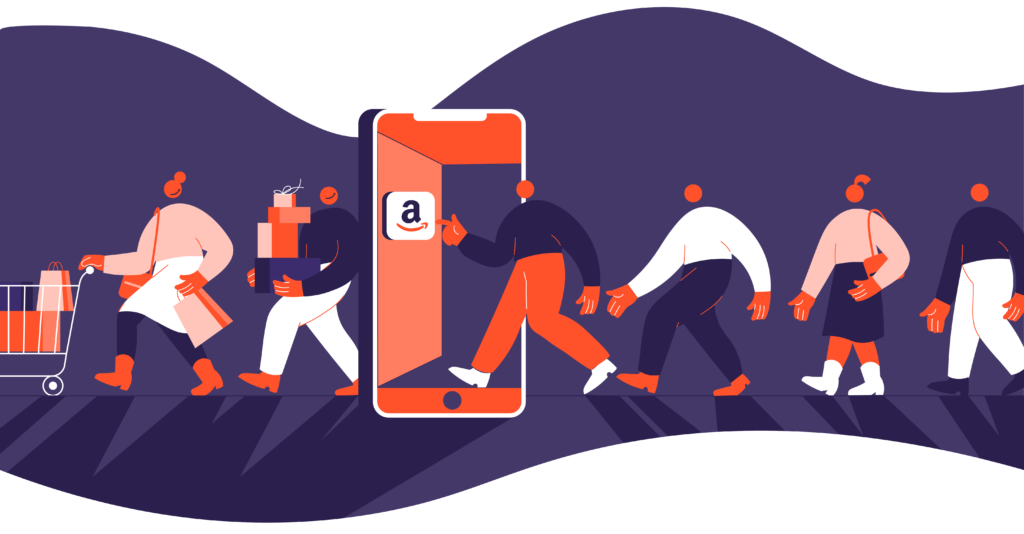
To create an eCommerce website like Amazon, you should know how it works. As of 2019, Amazon includes 750,000 employees. The company has eight branches around the world — in China, Canada, Japan, Germany, France, Spain, Italy, Great Britain. It requires employees to manage a vast Amazon eco-system that includes the marketplace for the purchase of various categories of products along with a cloud platform offering data processing services.
According to Similarweb, the number of Amazon monthly visits reaches up to 2,3 billion. And 3,5 billion packages globally were delivered in 2019. When Jeff Bezos founded the company in 1995, its scope of activity was the sale of books, while today, Amazon offers 34 product categories including e-books, consumer electronics, toys, food, sporting goods, auto parts, etc.
As we noted above about the cloud platform, it is necessary to cover it in detail. The Amazon Web Services (AWS) platform offers infrastructure like virtual servers and cloud databases, middleware, serverless computing solutions. AWS provides users with IaaS (Infrastructure-as-a-Service), PaaS (Platform-as-a-Service), SaaS (Software-as-a-Service) solutions. So AWS is one of the sources of profit for Amazon.
Amazon sells products using two following models:
Fulfilled By Amazon (FBA). All items are stored in the Amazon fulfillment centers, and Amazon employees handle all operations related to the sale of these items;
Fulfillment by Merchant (FBM). Third-party sellers use Amazon as a marketplace to sell their products and manage them on their own (delivery, storage, etc.).
As of 4th quarter 2019, 53% of units sold via Amazon belong to third-party vendors, according to Statista. By the way, not all these vendors represent small companies. Such active players like Nike, GoPro, Cassio sell their products on Amazon as well.
Business Strategy To Focus On
Amazon adheres to a strong business strategy that cannot be ignored if you plan to create a website like Amazon. Amazon always follows new trends and uses them in business promotion. But today, Amazon even may originate these trends on their own. Let’s break down the main strategies you need to focus on to succeed. And also, check out an article containing key tips to start a digital business.
Business plan development. Competing with Amazon seems something complicated, to say the least. And you need to start with the building of a business plan for your shopping website like Amazon. When you draw up a business plan, you can write down the steps of your business development, consider pitfalls you may face, and estimate the budget for the project.
Niche and target audience research. You cannot just start with selling smartphones or clothes. You need to conduct comprehensive research to find the appropriate niche if you create a marketplace website. At least, you should start with a few types of products, and then grow gradually.
Besides, you must determine what your target audience is, who you are selling products to. Because properly selected target users may become the distinguishing feature of your online shopping site like Amazon.
Segments expansion. We mean an expansion of your business, entering into new niches. Amazon started its way as an online book store, but now it is the largest marketplace. Of course, your website won’t offer diversified segments of products immediately, and the expansion will take time. However, don’t be afraid to try something new like Amazon does.
Implementation of the right marketing approach. Creating a website like Amazon may be a bad idea if you are going to bypass marketing strategy. Social media marketing, search engine optimization, email marketing, content marketing, etc. — you need to use each of the listed ways to promote your new website and notify as many users as possible about your new eCommerce store.
Focus on customer service. You should duplicate the experience of Amazon and become a customer-centric company. Otherwise, you will fail. You must consider customers’ demands and needs, provide them with excellent customer experience, delivering high-quality products. Your primary goal is to increase customer trust and loyalty towards your company.
Ways To Monetize Your eCommerce Platform
Once you’ve come up with a business strategy for your project, you need to single out monetization methods and choose which of them will help you generate a profit. We will list the revenue models of Amazon to provide you with a full picture of their activities.
Fees. It is the main part of the Amazon profits, fees for the products sold, shipped, etc. It includes such varieties of fees like referral fees (vendors pay for each sold product, the price depends on product type), per-item fees (fixed fee $0,99 is paid per each item sold), shipping fees (Amazon charges shipping fees, its amount varies depending on the product category), closing fees (paid for each media item sold like music albums, software video games, etc.).
High-volume listing fees. This type of fee differs from the fees described above. Third-party vendors pay $0,005 for each ASIN (Amazon Standard Identification Number). ASIN is a unique identifier of each product sold on Amazon. But high-volume listing fees are paid only when the number of published items of one vendor exceeds 100,000.
Advertising. Well, this is the most popular monetization method. Thematic advertising on the eCommerce website may generate a good profit. However, Amazon gains more revenue from fees rather than from ads.
Subscription fees. Amazon has the Amazon Prime subscription model that provides users with certain advantages like 2-day delivery, access to Amazon Instant Video, Prime Music, and other benefits. Users pay $119 per year for a subscription. Thus, you can create some premium models that include bonuses for users.
Steps To Amazon-like Website Development

We reached the main point of the article, where we will shed light on the eCommerce website development process. You need to read it attentively to know how to build a website like Amazon.
Professional web development begins with careful planning and requirements analysis. This helps determine the basic functionality that your website will need. Also, before starting the creation of a web platform, clear goals are established and user requirements are understood. The team creates a detailed project roadmap that describes each development phase, from initial design to final deployment.
Now, let’s walk through other important aspects of creating an eCommerce solution.
Choose An eCommerce Platform
That is what you need to consider when business strategy along with revenue models are elaborated. There are open-source eCommerce platforms that can be used for the development of your marketplace. Software developers may recommend some specific platforms, but we list the most popular of them: Magento, Shopify, Bigcommerce. Each platform has its particularities, and you need to choose the one that fits your ideas perfectly.
When selecting an eCommerce platform for your web development, consider factors such as:
- scalability;
- ease of customization;
- available integrations.
Magento, for instance, is known for its robust customization capabilities and is ideal for businesses expecting significant growth. Shopify, on the other hand, offers a user-friendly interface and extensive app marketplace, making it a great choice for small to medium-sized businesses looking for a quick setup.
Bigcommerce in web development stands out for its comprehensive built-in features and strong SEO capabilities, catering to businesses that want an all-in-one solution without relying heavily on third-party apps.
Additionally, consider the cost implications and support provided by each platform.
- Magento can be more costly due to its complex setup and need for professional development services, but it offers unmatched flexibility.
- Shopify provides excellent customer support and a range of pricing plans to suit different budgets.
- Bigcommerce offers transparent pricing and 24/7 support to ensure smooth operation.
Evaluating these aspects in relation to your business needs will help you make an informed decision. This way you and your web developers can be sure that your chosen platform supports your long-term business goals.
Buy A Reliable Hosting And Give Your Website A Name
For an eCommerce website like Amazon, you need to purchase a stable hosting server. Good hosting is expensive, but it will have enough capacity to handle the load on the website. It is recommended to use cloud hosting — it will be more costly, but you get a multipurpose server for your needs.
Besides, don’t forget about the website’s name and domain. The name should be short and catchy. So you can create a name that builds some associations (like Amazon does).
What should your web developer pay attention to in this case?
When choosing a hosting provider, also consider factors like
- uptime guarantees (critical for web development);
- customer support;
- security features (including programming languages features).
Reliable hosting should offer at least 99.9% uptime for web applications to ensure your website is always accessible to customers.
Look for providers that offer robust security measures, including SSL certificates, DDoS protection, and regular backups, to safeguard your eCommerce platform from potential threats. This is critical in web development. Good customer support is also essential. This is your tool for resolving any issues quickly, so opt for a provider with 24/7 support.
In addition, the geographical location of your hosting servers can impact your website’s and web pages’ performance. Hosting your site on servers that are closer to your primary customer base can significantly reduce latency and improve load times. This enhances further web development and overall user experience.
Some hosting providers offer Content Delivery Networks (CDNs) to distribute your content globally, ensuring fast and reliable access for users regardless of their location. This consideration can be crucial for businesses aiming to serve a global market.
Architecture Building
If you are not a software developer, you won’t be able to build the right architecture for your eCommerce website. But a dependable specialist will implement everything correctly, so choose a trustworthy company like Cadabra Studio.
Ok, what should the architecture of the eCommerce website include? Your website should have a high security level, high performance, and scalability.
As for security, an eCommerce website stores users’ payments and other personal confidential data, so everything must be encrypted to avoid attacks of web malefactors. The website must be protected from DDoS and XSS attacks, secured from SQL-injections.
The performance level also plays a vital role since users don’t like to wait. If everything works slowly, it will have a negative impact on your revenue. Keep it in mind when you create a professional eCommerce website like Amazon.
And scalability. Your website must be scalable since marketplaces always improve, new features may be added, trendy technologies may be applied.
Create An Interactive Design
User-interactive design is especially essential for eCommerce websites. Users should navigate through your site quickly and intuitively, so UI and UX must be created with well-thought-out behavior models. As a software development and design company Cadabra Studio may create an attractive interface and perfect user experience for your website, so contact us at any time.

Also, we always monitor up-to-date trends and apply them to our design to make your project competitive. Well-created design lets your business stand out among competitors, read more about in our article concerning the value of design.

What does intuitive design mean? When buyers enter the product page, it should contain habitual features like See the price in a local currency, View images, Read reviews, Add the item to a shopping cart, Choose the delivery method/payment method, Make an order. The right design impacts directly your business success and website popularity.
What else?
- responsive design;
- accessibility as an objective of design and web development;
- interactivity.
Additionally, it’s crucial to ensure your design and web pages are mobile-responsive. With a significant portion of eCommerce traffic coming from mobile devices, your web applications must perform seamlessly on smartphones and tablets.
A responsive design adjusts to different screen sizes and orientations. This is the stage of professional web development that provides a consistent user experience across all devices. Such approach not only enhances user satisfaction but also improves your search engine ranking, as search engines favor mobile-friendly websites.
Another important aspect of interactive design is accessibility. Your eCommerce website should be usable by people with disabilities, complying with standards such as the Web Content Accessibility Guidelines (WCAG).
Implement features like keyboard navigation, screen reader compatibility, and alternative text for images to make your site accessible to all users. This inclusivity is as essential as programming languages. It broadens your potential customer base and demonstrates your commitment to serving diverse audiences.
Finally, incorporating interactive elements such as animations, microinteractions, and chatbots can significantly enhance user engagement. Animations and microinteractions provide visual feedback and guide users through the purchasing process, making the experience more enjoyable.
Chatbots, on the other hand, can offer instant customer support, answer common questions, and assist with product recommendations, creating a more personalized shopping experience. These interactive features can lead to higher conversion rates and increased customer loyalty.
Development Process
The most complicated stage is initiated. Software developers start creating your website using various tools. This process may take from 3-4 months to one year and more. Everything depends on the complexity of content and the initial scale of a website.
The eCommerce website should be created by skilled specialists of middle and senior levels. Technology stack required for Amazon-like website development may vary since each development team may apply one or the other programming tool to achieve a specific goal.
But we would like to pay attention to the following tech stack that may be used for the eCommerce website creation:
Front-end: JavaScript, HTML5, CSS
Frameworks and libraries: React, Vue, Angular
Back-end: Java, Ruby, Perl, Python
Databases: MongoDB, MySQL, Redis, AWS
Payment gateway: Braintree, PayPal, Stripe
Utilities: Elasticsearch, Amazon EC2, Amazon A/B Testing, Nginx, Google Analytics
What’s interesting, to build a website like Amazon, developers will probably use some tools of Amazon because they are reliable and make the site more robust. As for the Amazon website, its tech stack almost entirely consists of Amazon tools, except for front-end and back-end and programming languages.
Project management as a part of web development
An effective project manager is the best friend of a web developer. Proper management is crucial during web development to ensure that milestones are met and the project stays on schedule.
Utilizing Agile methodologies, such as Scrum or Kanban, can enhance collaboration and adaptability. This allows the team to respond quickly to changes and new requirements.
Regular sprints, reviews, and retrospectives help maintain a steady workflow and keep all stakeholders informed about the project’s progress. So, make it a part of web development.
Prioritize security
Finally, security measures must be prioritized throughout the development process. Implementing robust security protocols, such as SSL encryption, secure payment gateways, and regular security audits, helps protect user data and build trust with your customers.
Additionally, adhering to data privacy regulations, like GDPR or CCPA is also critical in web development. This approach ensures compliance and safeguards your business from potential legal issues. Focus on security from the outset, and you can prevent breaches and maintain the integrity of your eCommerce platform.
Testing
When the website is created, a proper testing process should be implemented in web development process. Apart from the must-have testing stages performed by QA engineers, we mean beta testing and A/B testing as well. That is, we recommend you build a few versions of a website, then gather a focus group and let them test these versions.
You perform marketing operations, collect feedback, and it helps you come up with the best solution that meets their expectations. Moreover, beta users may give some tips on your website and future web development improvement.
Quality assurance (QA)
Quality assurance (QA) is also an ntegral part of web development. Comprehensive testing, including unit tests, integration tests, and user acceptance tests (UAT), ensures that the website functions correctly and provides a seamless user experience.
Web developers can employ automated testing tools to streamline the testing process and identify bugs early. It reduces the time and cost associated with fixing issues later in the development cycle.
Security testing
Security testing is another critical aspect of web development that should not be overlooked. This involves assessing the website for vulnerabilities such as
- SQL injection;
- cross-site scripting (XSS);
- and other potential threats.
Regular security audits and penetration testing help to identify and address security weaknesses, ensuring that user data is protected and the website complies with industry standards and regulations. By implementing robust security measures, you can safeguard your eCommerce platform against malicious attacks and data breaches. So make it a part of your web development.
Performance testing
Performance testing is also crucial to ensure that your eCommerce website can handle high traffic volumes and provide a smooth user experience during peak times. This part of web development involves load testing, stress testing, and scalability testing to identify any performance bottlenecks. Addressing these issues early ensures that your site remains responsive and reliable under heavy user loads.
Usability testing
Lastly, usability testing focuses on the user experience, evaluating how easy and intuitive the website is to navigate. Gathering feedback from real users performing typical tasks on your site can highlight areas for improvement in the design and functionality.
This user-centric approach helps in web development that meets the needs and expectations of your target audience, ultimately leading to higher satisfaction and conversion rates.
This article may be interesting for you: How to Make a Site Like Craigslist
MVP Features To Build An eCommerce Website Like Amazon
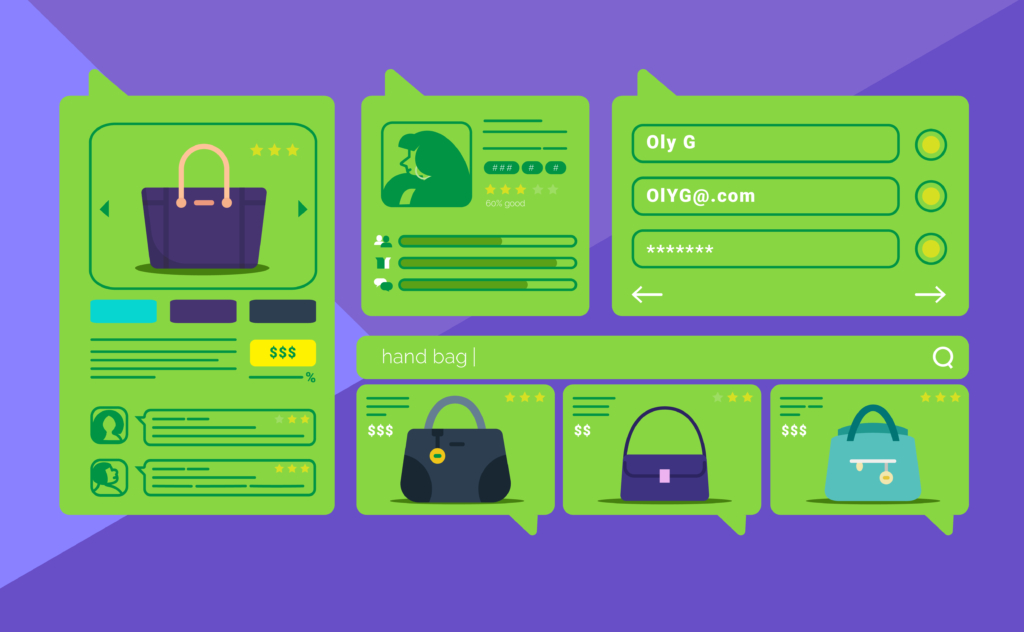
No, we didn’t forget about the functionality of a website. There are basic features your site like Amazon should include. Remember that the must-have features make the skeleton of your website, but they don’t make your website awesome by default. So think about additional features to enhance your online marketplace. And figure out more reasons why an MVP is essential for your business.
Registration/sign-in. Users may navigate through your website without registration, but to buy something, they must create accounts. Today this process should take as little time possible, so let users sign in using social media accounts on Google or Facebook.
User profile. Your Amazon-like website should have two types of accounts — for buyers and vendors. Buyer profiles contain personal info, payment details, whereas vendor accounts include shipping details and product details, payment methods used by a buyer.
Search. It is much more convenient to use a website that has a search feature. Especially if it is an eCommerce website that cannot exist without the search. You need to add advanced search with filters to find a particular product by type, category, price, color, etc.
Product page. A profile for a product — a page that contains the information about a product, images, reviews, price. As an additional feature, you may add a comparison of the prices for a specific product.
| List of Features | |
Must-have features |
|
Should-have features |
|
Could-have features |
|
Table source
Reviews/ratings. All users should have the capability to leave reviews about products and rate the service level. Users have more trust towards a website that contains ratings and reviews about each product.
Shopping cart. A user may look through all the products he chose to buy. In a shopping cart, a buyer can change the number of items, remove or add something, select shipping/payment methods, etc.
Shipping method. Users may choose how the shipment will be done, see the delivery period, and how to pay for it.
Payment gateway. To let buyers pay for products and sellers receive funds, you need to add one or a few payment methods. The more payment methods your website offers, the higher the impact it has on customers’ loyalty. Use trustworthy payment systems like Braintree, Stripe, PayPal.
Push notifications. Buyers and sellers must be notified about all changes in their profiles. For example, an order status is changed to Accepted, or a delivery status is changed to Shipped. Or new products are added to the website, and users are waiting for it to buy. Notifications allow users to stay up-to-date.
CMS. The content management system (CMS) is an admin panel that allows the website owner to customize specific settings on a website without the development team’s assistance.
Let’s Draw The Line
Having read an article, you have a more clear conception of steps on how to make an eCommerce website like Amazon. It is an uneasy task to compete with Amazon, so you will have to invest many resources in your website development to make it stand out. However, a wise approach is always better than reckless actions that lead to failures and ineffective costs.
Additionally, understanding your target market and tailoring your web development so the final product can meet their specific needs give you a huge competitive edge. Conduct thorough market research to identify gaps in the current offerings and opportunities for differentiation.
This can involve unique product selections, superior customer service, or innovative features that enhance the shopping experience. By focusing on what sets your business apart and how web development can emphasize your unique proposition, you can attract and retain a loyal customer base.
Investing in digital marketing is another crucial aspect of building a successful eCommerce website. Utilize SEO, content marketing, social media, and paid advertising to drive traffic to your site. Engaging content and strategic advertising can significantly boost your online presence and attract potential customers.
Data analytics can help you understand customer behavior and preferences, enabling you to refine your marketing strategies and improve conversion rates. Everything, starting from hypertext markup language and ending with security features is driven by data.
Lastly, consider scalability from the initial stages of web development. As your business grows, your website needs to handle increased traffic and transaction volumes without compromising performance. Plan for future expansion by choosing scalable technologies and infrastructure.
Regularly updating your website with new features and keeping up with industry trends will ensure that your eCommerce platform remains relevant and competitive in the long term. This proactive approach will help you adapt to changing market conditions and customer expectations, as well as foster sustained business growth.
To build the Amazon-like website, hire a dependable software development company that has qualified staff. As we noted above, Cadabra Studio has all the necessary tools to make your eCommerce website real and launch it. Your troubles — our solutions!


